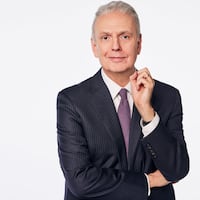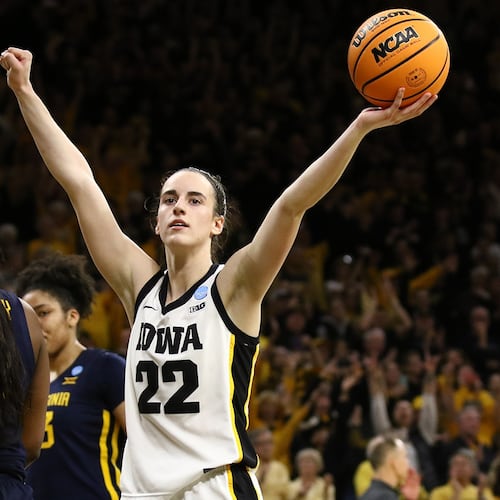We can’t say we weren’t warned. In the summer of 2015, with the Braves’ pivot toward pitching fully underway, president of baseball operations John Hart said: “It takes 10 to get three,” meaning that for every 10 pitching prospects, you might reap three capable big-league pitchers.
Sometimes Hart changed the math, saying, “It takes 10 to get one.” Brian Bridges, then the Braves’ chief of scouting, said: “You know what they say: It takes 20 to get one.” By then, we’d gotten the point: Even in a best-case scenario, not every young arm turns into Sandy Koufax, who himself took a while to turn into Sandy Koufax.
Nearly every trade executed by John Coppolella, the Braves’ general manager in theory from October 2014 and in title from October 2015 through his forced departure in October 2017, yielded a young pitcher in return. It’s going on three years since he was ousted as GM – and banned for life by MLB for misdoings in the international talent market – but this delayed season began with the Braves deploying a five-man rotation that could have been dubbed Generation Coppy.
Two of those five have since been deleted – Mike Soroka lost to a torn Achilles, Mike Foltynewicz designated for assignment and banished to the Braves’ Gwinnett camp for being … well, Mike Foltynewicz. So now you’re thinking: So much for Gen C, right?
Not quite. As of Saturday, the Braves hadn’t deployed a starting pitcher who wasn’t acquired by Coppolella. The day is coming when they will – someone must take Soroka’s spot, and Cole Hamels might even get healthy – but they plugged the Folty gap with Touki Toussaint. Despite a major injury and a major reversal, the team that not long ago reconfigured itself around young pitching made it through 14 games using only the fruits of that reconfiguration.
This weekend seems an apt time to take stock of the most notable young arms landed during the three years of Coppolella/Hart. The criteria for inclusion on this list: The pitcher had to have been a Round 1 pick or been listed among the top 100 prospects of a given year. (The majority were both.) They appear in the order of arrival.
Shelby Miller: 4.2 WAR as Brave; acquired from St. Louis in Jason Heyward trade of November 2014; 2015 All-Star; traded to Arizona for Dansby Swanson, Ender Inciarte and Aaron Blair in December 2015; drafted Round 1 (19th overall) in 2009; ranked fifth by MLB Pipeline in 2012; signed as free agent by Milwaukee in February 2020; opted out of 2020 season.
Tyrell Jenkins: minus-0.4 career WAR; acquired from St. Louis in Heyward trade of November 2014; drafted Round 1 (50th overall) by St. Louis in 2010; ranked 94th by Baseball Prospectus in 2013; traded to Texas for Luke Jackson in December 2016; released by San Diego in July 2017.
Max Fried: 4.6 career WAR; acquired from San Diego in Justin Upton trade of December 2014; drafted Round 1 (7th overall) by San Diego in 2012; ranked 43rd by MLBP in 2014; in Braves’ starting rotation.
Mike Foltynewicz: 4.6 career WAR; 2018 All-Star; acquired from Houston in Evan Gattis trade of January 2015; drafted Round 1 (19th overall) by Houston in 2010; ranked 43rd by BP in 2014; working with Braves’ taxi squad as a non-roster player.
Matt Wisler: 0.2 WAR as Brave; acquired from San Diego in Craig Kimbrel trade of April 2015; traded to Cincinnati for Adam Duvall in July 2018; drafted in seventh round by San Diego in 2009; ranked 34th by Baseball America in 2015; selected off waivers by Minnesota in October 2019; in Twins’ bullpen.
Kolby Allard: minus-0.6 WAR as Brave; drafted Round 1 (14th overall) in 2015; traded to Texas for Chris Martin in July 2019; ranked 24th by BP in 2018; in Rangers’ starting rotation.
Mike Soroka: 5.6 career WAR; 2019 All-Star; drafted Round 1 (28th) in 2015; ranked 24th by MLBP in 2019; on injured list.
Touki Toussaint: minus-0.3 career WAR; acquired from Arizona along with Bronson Arroyo’s contract for Phil Gosselin in June 2015; drafted Round 1 (16th overall) by Arizona in 2014; ranked 50th by MLBP in 2019; in Braves’ rotation.
Sean Newcomb: 3.5 career WAR; acquired from Angels in Andrelton Simmons trade of November 2015; drafted Round 1 (15th overall) by Angels in June 2014; ranked 24th by MLBP in 2016; in Braves’ starting rotation.
Aaron Blair: minus-2.0 career WAR; acquired from Arizona in Shelby Miller trade of December 2016; drafted Round 1 (36th overall) by Arizona in 2013; ranked 40th by BA in 2015; released by Braves in May 2018; released by Arizona in May 2020; has made four starts for Eastern Reyes del Tigre of the independent Constellation Energy League.
Ian Anderson: Drafted Round 1 (third overall) in 2016; ranked 24th by BA in 2019; working with Braves’ taxi squad as a non-roster player.
Joey Wentz: Drafted Round 1 (40th overall) in 2016; ranked 24th by BP in 2018; traded to Detroit for Shane Greene in July 2019; ranked No. 10 prospect in Tigers system by MLBP.
Kyle Muller: Drafted Round 2 in 2016; ranked 60th by BP in 2020; working with Braves’ taxi squad as a non-roster player.
Bryse Wilson: minus-0.6 career WAR; drafted Round 4 in 2016; ranked No. 60 by BP in 2019; on Braves’ 40-man roster.
Luiz Gohara: minus-0.3 career WAR; acquired from Seattle in Mallex Smith trade of January 2017; signed by Seattle as international free agent in August 2012; ranked 23rd by BA in 2018; released by Braves in August 2019; released by Angels in May 2020.
Kyle Wright: minus-0.6 career WAR; drafted Round 1 (fifth overall) in 2017; ranked 30th by MLBP in 2019; in Braves’ rotation.
From those 16, the Braves have netted 17.9 Wins Above Replacement, as calculated by Baseball-Reference. Per B-Ref, the two best MLB pitchers in 2019 had an aggregate WAR of 15.4. Maybe that doesn’t seem like much of a yield for three years’ of scouting/trading/drafting, but let’s also note: The Braves turned one year of Miller (4.2 WAR) into the continuing careers of Dansby Swanson (5.5) and Ender Inciarte (10.6). They also shed Simmons, whose post-Braves WAR is 20.3. Win some, lose some.
Under Alex Anthopoulos, the Braves turned Wisler, Allard and Wentz into Duvall, Martin and Greene. That, too, was part of the plan. However many pitching prospects it took to find one real pitcher, the Braves saw their surplus of young arms as – Hart’s word – currency. Since Coppolella’s ouster, his former team has seen two of his lovingly cultivated pitchers become All-Stars on Braves teams that won the National League East; three of his acquisitions have started six of the nine resulting playoff games.
Given that Anderson and Muller haven’t reached the majors and that Soroka just turned 23, the ledger of the Rebuild isn’t nearly complete. The complaint most heard as the Braves were collecting and collating was that there wasn’t a No. 1 starter in the bunch. If Soroka doesn’t have No. 1 potential, then I’m Vinegar Bend Mizell (career WAR 14.7).
We can bemoan Soroka’s inability to stay healthy. We can scream over the start/stop nature of Foltynewicz’s career. We can wonder if Anderson and Wright should have been top-five picks. We can ask what the heck happened with Wisler and Blair. There’s a reason some baseball folks hold that there’s no such thing as a pitching prospect: Arms are forever doing funny things.
Of the 16 listed above, nine are still in the organization. Six of the nine have started for the Braves in 2020. That’s not the final bottom line, but it’s not nothing, either. It’s pretty darn good.
About the Author
The Latest
Featured


